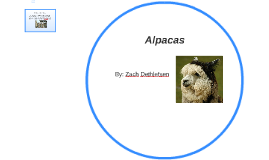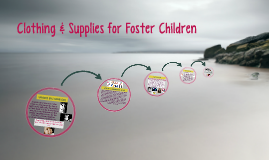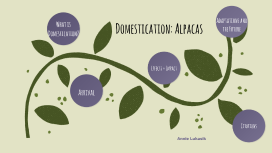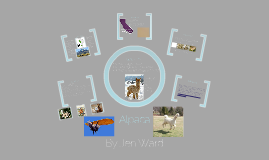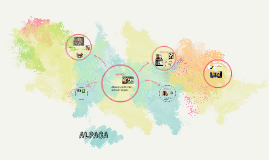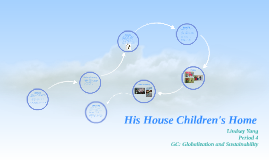Updated Alpaca Presentation
Transcript: Domestication: Alpacas Annie Lukasik What is Domestication? What is Domestication? When something is domesticated, it adapts to its environment and the needs of people for human use. Some uses for domesticated animals are work, food, clothing, and medicine. Because domesticated species need to be cared for and raised by humans, they are not considered wild. Alpacas were domesticated as a source of transporatation, clothing, and meat by the Andean people. Causes for Domestication As said earlier, Alpacas were domesticted so people did not have to walk eerywhere. Their wool made a great source of clothing that kept people warm and was tradeable to people who did not have access to the wool. Causes for Domestication Arrival in South America + The U.S. Alpacas arrive in South America, their ancestors being vicunas and guanacos and they emerged via selective breeding about 6,000 years ago. They were mostly bred and domesticated by the Andean people but were imported to the U.S. in 1984. Arrival Location of Origin Alpacas were selectively breeded in order to acomodate the needs of humans over 6,000 years ago. Their ancestors, the vicuna, is rare and protected. They are both in the camelid family. Location of Origin Pictures Effects of Domestication Effects + Impact Because alpacas are domesticated, they are able to be bred with a close wild relative, the vicuna, which results in offspring with high-quality wool that is not found in the wild. However, this selective breeding can negatively affect the vicuna. Although this does not impact the alpaca species as much, it disturbs the natural organization of the vicuna, increases the likelihood of inbredding, and an increase in disease. Impacts of Domestication Impact Because alpacas were selecively bred, little is known about their ancestry. It is also hard to find genetic ancestry of the alpaca because they were bred extensively for the Spanish Conquest of South America, resulting in a mass slaughter of all unecessary alpacas. Despite this, alpacas are one of the most "eco-friendly" animals, as even their wool is a sustainable option. Citations Citations 1. https://education.nationalgeographic.org/resource/domestication 2. http://www.westwightalpacas.co.uk/about/origins 3. http://www.bonnydoonalpacas.org/factshx.html#:~:text=A%20common%20ancestor%20to%20the,heavily%20influenced%20by%20the%20vicuna. 4. https://zooatlanta.org/animal/huacaya-alpaca/ 5. https://www.thecommonsjournal.org/article/10.18352/ijc.139/#:~:text=Furthermore%2C%20maintaining%20populations%20in%20enclosures,and%20transmission%20of%20diseases%20(Vil%C3%A1 6. https://www.thecommonsjournal.org/article/10.18352/ijc.139/#:~:text=Furthermore%2C%20maintaining%20populations%20in%20enclosures,and%20transmission%20of%20diseases%20(Vil%C3%A1 7. https://elifesciences.org/articles/63390 Change + Adaptations Alpacas have pads on their feet to help them comfortably travel long distancs. It also helps them walk across grass without digging it up. This is important as travel is one of their main reasons for domestication. This adaptation developed when they were domesticated, because the Andes are mostly desert, so it can be inferred that this adaptation developed when they were exposed to more vegetation. Adaptations and the Future Future Plan Future Plan I believe that in 100 years, many animals that ar now endangered are going to be domesticated. This will be to help recover the species before it goes extinct. I also believe that in 100 years, science will be trying to bring back animals that are currently extinct and domesticate them. This could be good for the species because it is no longer endangered or extinct, but it will have lost a lot of its wild instincts and patterns.






